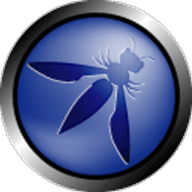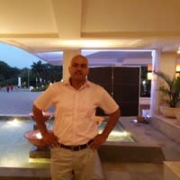

SonarQube and OWASP Zap compete in the code quality and web application security testing markets, respectively. SonarQube stands out in offering a comprehensive view of code quality across multiple programming languages and is particularly beneficial for project management, while OWASP Zap has an edge in flexibility and zero-cost web application vulnerability scanning.
Features: SonarQube provides extensive language support, custom coding rules, unit test integration, and code duplication checks. It enhances project direction with its time machine tool and offers valuable graphical representations for project management. OWASP Zap integrates built-in features like automated scanning and detailed reporting, supports multiple platforms, and extends functionality with add-ons and extensions.
Room for Improvement: SonarQube could improve scanning capabilities for multiple languages and complex configurations. Further security insights and better API documentation are desired. OWASP Zap would benefit from enhancing its reporting and expanding scan coverage, as well as reducing false positives and automating its features more effectively.
Ease of Deployment and Customer Service: SonarQube offers flexible deployment options such as hybrid and on-premises cloud setups, though it requires IT resource management. Customer service feedback is mixed and largely community-based. OWASP Zap supports on-premises deployment with open-source flexibility, bolstered by strong community support but lacking comprehensive expert backing.
Pricing and ROI: SonarQube offers free and premium plugins, fitting diverse needs but potentially expensive for large codebases, though promising ROI in code quality and security. OWASP Zap attracts smaller companies with its cost-effective open-source model, allowing essential security testing without initial financial investment, appealing to startups and budget-conscious enterprises.
| Product | Market Share (%) |
|---|---|
| SonarQube Server (formerly SonarQube) | 20.8% |
| OWASP Zap | 4.4% |
| Other | 74.8% |


| Company Size | Count |
|---|---|
| Small Business | 10 |
| Midsize Enterprise | 11 |
| Large Enterprise | 21 |
| Company Size | Count |
|---|---|
| Small Business | 41 |
| Midsize Enterprise | 24 |
| Large Enterprise | 79 |
OWASP Zap is a free and open-source web application security scanner.
The solution helps developers identify vulnerabilities in their web applications by actively scanning for common security issues.
With its user-friendly interface and powerful features, Zap is a popular choice among developers for ensuring the security of their web applications.
SonarQube provides comprehensive support for multi-language development, custom coding rules, and quality gates, integrated seamlessly into CI/CD pipelines. It empowers teams with clear insights through intuitive dashboards, identifying vulnerabilities, code smells, and technical debt.
SonarQube is renowned for its extensive capabilities in static code analysis, making it an invaluable tool for maintaining code quality. By fully integrating into development processes, it allows organizations to manage vulnerabilities and ensure compliance with coding standards. Its extensive community and open-source roots contribute to its accessibility, while robust dashboards facilitate code quality monitoring. Despite its strengths, feedback suggests enhancing analysis speed, better integration with DevOps tools, and refining the user interface. Users also point to the need for handling false positives effectively and expanding on AI-based features for dynamic code analysis.
What are SonarQube's main features?In industries like finance and healthcare, SonarQube aids in obtaining regulatory compliance through rigorous code quality assessments. It is implemented to enhance cybersecurity by identifying potential vulnerabilities, while ensuring code meets the stringent standards demanded in these fields. As part of a broader development ecosystem, its integration in CI/CD pipelines ensures smooth and efficient software delivery, catering to phases from code inception to deployment, effectively supporting large-scale and critical software applications.
We monitor all Static Application Security Testing (SAST) reviews to prevent fraudulent reviews and keep review quality high. We do not post reviews by company employees or direct competitors. We validate each review for authenticity via cross-reference with LinkedIn, and personal follow-up with the reviewer when necessary.